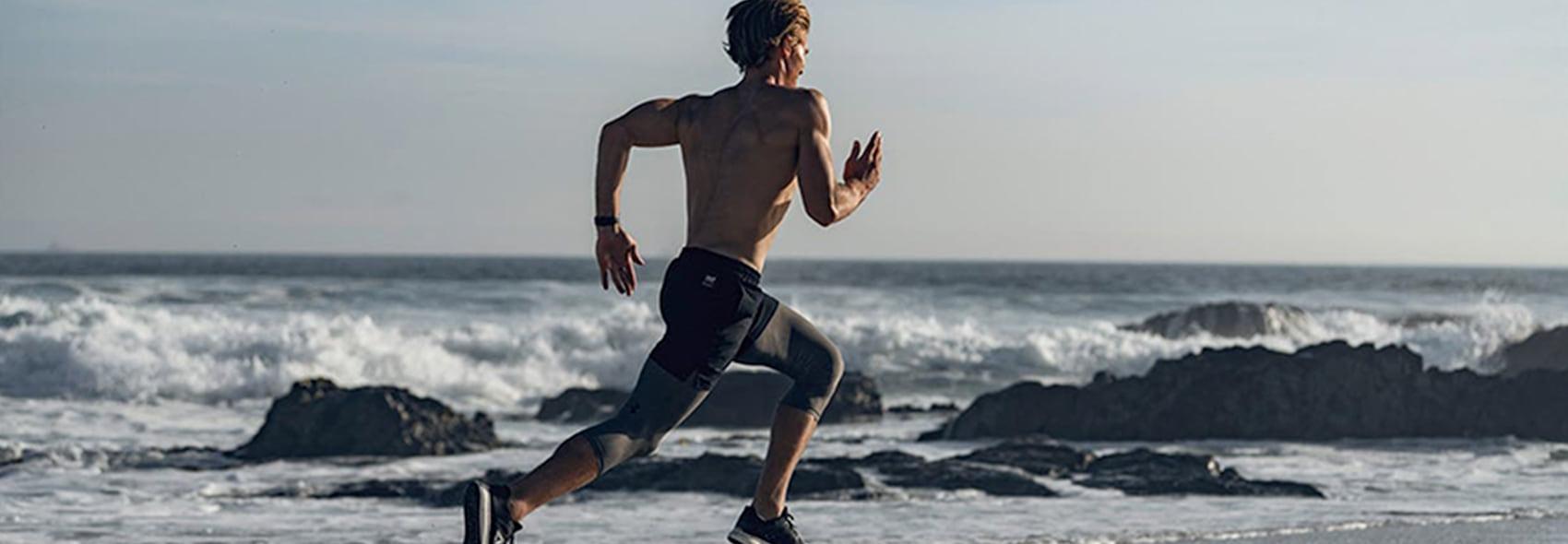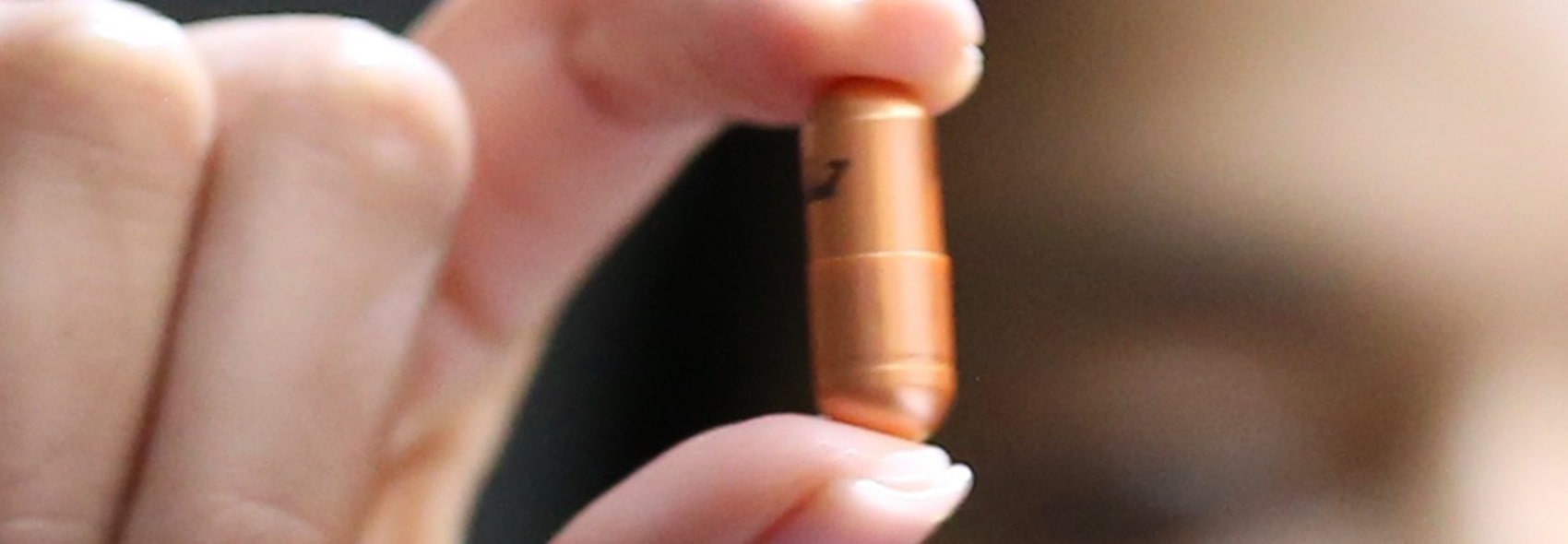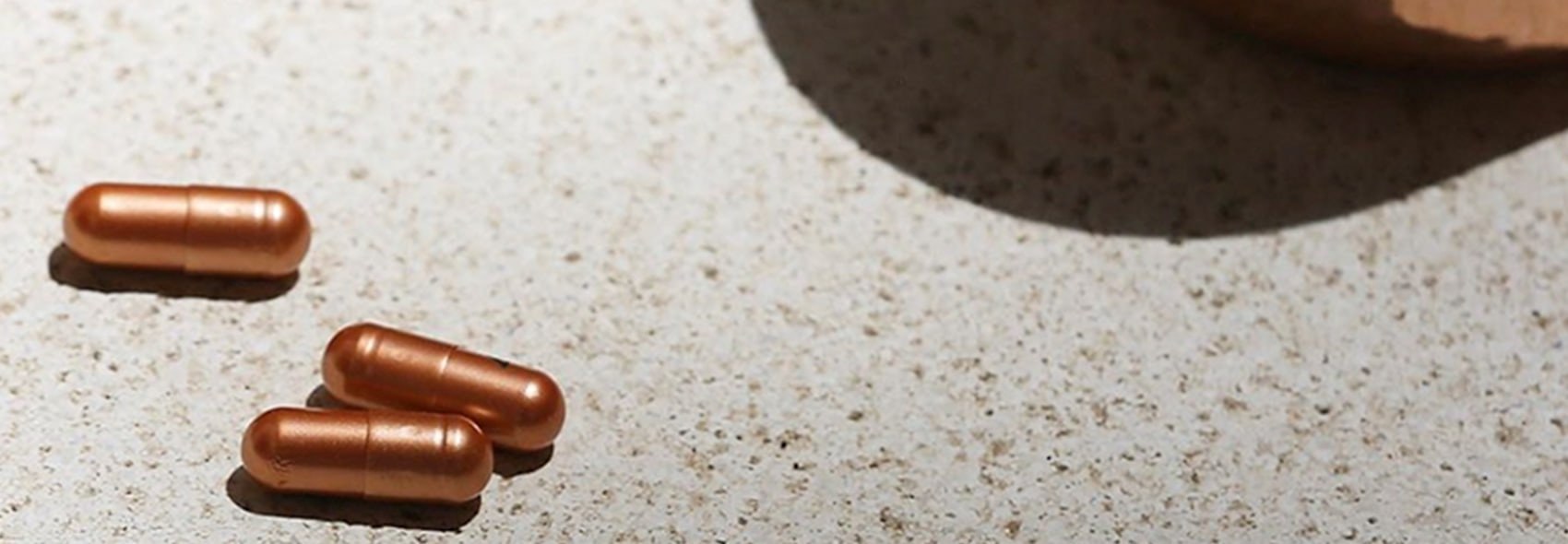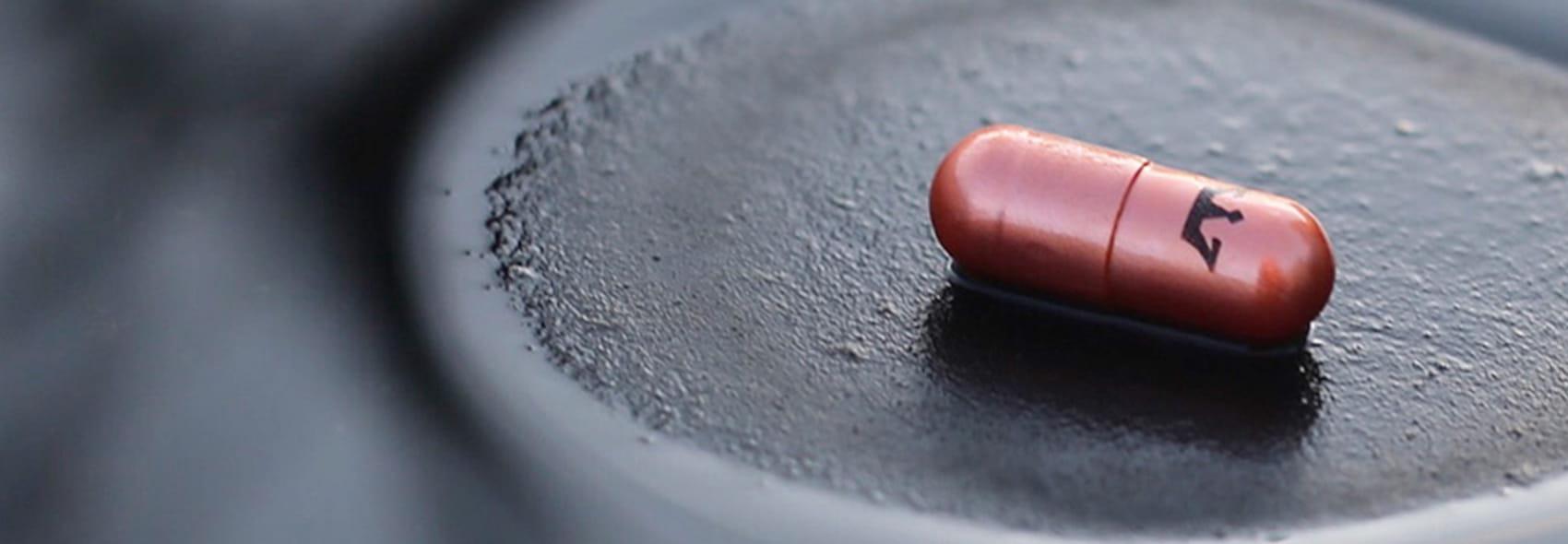The quest
for better.
Sign up to our mailing list to discover the future of beauty and wellness.
5 Minute ReadHow To
15.10.20 (Updated 12.04.22)
Running can take a real toll on your body. From achy hips, to the dreaded ‘runner’s knee’, running related joint pain is no joke. Joint pain can prevent you from training for sustained periods, potentially ruining any hope of a new personal best for the foreseeable future and, worst case scenario, can stop you running for life.
It doesn’t matter whether you’re totally new to running or a seasoned athlete, joint pain can strike at any time in your career. Nutrition for runners must be taken seriously if you want to keep your joints strong, and there are supplements you can take to protect your joints and bones. Specifically, anti-inflammatories and vitamins D3 and K2 are some of the most important supplements to take for running recovery .
There are a number of ways to treat and prevent joint and knee pain from running. Certain vitamins and supplements can be really helpful for curing pain in the knees and hips, and so too can taking some of the following steps and precautions:

LYMA contains the powerful combination of vitamins D3 and K2. These two nutrients actually need to be taken together if either is going to have any effect whatsoever - something many generic supplement brands seem to forget. Vitamins D3 and K2 are fundamentally important for calcium absorption and thus for maintaining musculoskeletal strength and integrity. LYMA’s formula contains highly specialised and patented Vita-algae D3™ and K2Vital® which work together to distribute calcium to the bones and tissues of the body, boosting strength and resilience. The body cannot manufacture vitamin D3 itself, and must be consumed in supplement form alongside vitamin K2 in clinically-proven quantities as is formulated in LYMA.
LYMA also contains a potent anti-inflammatory compound in the shape of HydroCurc® - the world’s first 100% water and fat-absorbable form of curcumin - which is indispensable for speeding up workout recovery and reducing inflammation in the joints. If left unchecked, this inflammation can lead to pain which may or may not go away on its own given time and the usual rest, ice, compression, elevation treatment. Runners who supplemented with HydroCurc® reported reduced inflammatory markers post-training compared with a control group, and were able to get back to their workout routine much faster than those who relied on other interventions alone.

Stretching all your muscles and joints before and after running should be an integral part of your workout regimen. Increasing the flexibility of your knee and hip flexor will not only help to reduce the likelihood of sustaining an injury, but will make you a better runner too by increasing your stride length and allowing you to run longer distances without tiring. Stretching can also help to reduce irritation in and around the joint and can ease inflammation and other sources of pain such as bursitis.
Stretching will also benefit your muscles, keeping them flexible and supple, and reducing the stiffness and tightness that can prevent you from running to the best of your ability. Your body will be in better overall condition if you commit to stretching all your key muscle groups (that’s legs, hips and lower back) for a minimum of five minutes each at the beginning and end of a run.

Sudden, abrupt increases in the intensity of your training can be seriously detrimental to the health of your bones and joints. You don’t want to shock your body and make it do something it isn’t ready to do. If you’ve been running 5km a couple of times a week, don’t suddenly increase your running distance to 10km four times a week, or even to a one-off 15km. Instead, make changes incrementally. Your body - joints, bones, muscles, connective tissues and cardiovascular system included - needs time to adjust.

Buy the best quality running trainers that you can afford and, if possible, buy them from a shop where the staff have been educated to help you select a pair that’s right for your unique gait and physiology. Often the process includes trying on a number of different training shoes and having a camera film you running in each pair on a treadmill. Shop staff can then use this footage to make an assessment as to which brand or style is best suited to your individual needs and can make a recommendation based on this.
To ensure ultimate protection for your joints, you should look for trainers with in-built shock absorption that fit securely but not too tightly as your feet are likely to heat up and expand slightly when running. Of course it depends on how often you run, but as a rule of thumb, trainers should be replaced once a year or every competitive season. Always make it a priority to train in the shoes you plan to compete in, as failure to do so could result in a pretty nasty experience come race day.

Make sure you practice good running form, leaning neither too far forward or backwards, and maintaining a strong core. This will take unnecessary pressure off the joints and help to distribute your weight more efficiently across your entire body. Easing the burden that body weight can take on your knees and hips if your running form is poor helps to prevent injury and pain.
Always keep your knees bent to prevent shocking the joints, and wherever possible avoid running on pavement or concrete surfaces. You’re better off training on a running track or on grass.
Running is a primary cause of joint pain, but it is not the only cause of achy joints. As we age, our joints naturally start to turn on us. Likewise, other forms of exercise can put undue pressure on our bodies and upset our knees and hips. Especially since its latest formula upgrade adding the proven PEA protein Levagen®+ to our groundbreaking all-in-one formula, supplementing with LYMA can help to reduce pain and inflammation in the joints, and can help to keep our bodies supple for longer. So whether you are a runner or are just beginning to notice that your joints aren’t quite what they used to be, LYMA can help you to get back to feeling like yourself again. For more ideas on keeping your joints healthy and your body working for you rather than against you, check out our ultimate guide to running recovery.